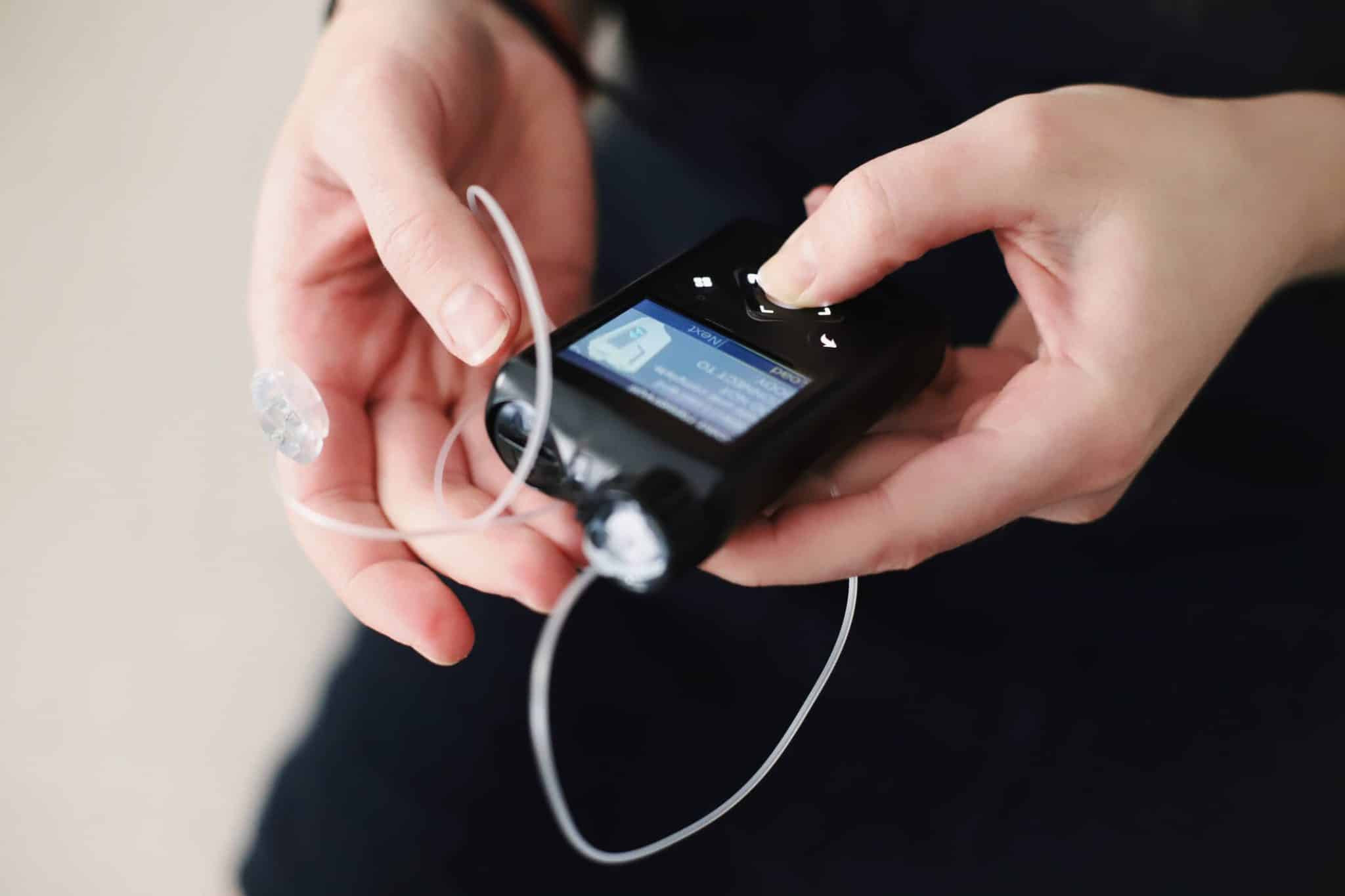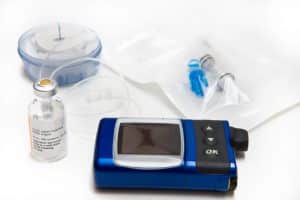
Selling Unused Insulin Pump Supplies: A Complete Guide
Posted on October 31, 2025 at 12PM
Selling Unused Insulin Pump Supplies the Right Way
When you have extra test strips, lancets, or unopened insulin pump supplies, selling them can be a smart way to recover money while helping reduce waste in the diabetes industry. Thousands of patients find themselves in this situation every year for various reasons — changes in prescriptions, new devices, insurance adjustments, or warranty replacements that result in unused extra supplies. For every seller, understanding available options and knowing how to create accurate listings with clear descriptions can make the process smooth, legal, and worthwhile. Selling responsibly ensures that valuable medical items reach others who need them, helping reduce waste while putting cash back into your pocket.
Before starting, it’s essential to review the condition of each item, check expiration and warranty information, and prepare detailed photos that reflect the true quality of your supplies. A complete listing with honest descriptions and reliable feedback helps build trust between buyer and seller. With proper support, helpful resources, and professional guidance, you can navigate the resale process with confidence. This guide provides clear guidance on how to safely sell unused diabetes supplies, maximize payouts, and follow best practices that protect both you and the patients who depend on these products.
Reasons People Have Extra Diabetes Supplies
People with diabetes often end up with more supplies than they need for a variety of reasons. Some switch to glucose monitors, others transition from test strips to continuous glucose monitors (CGMs), and many upgrade to new insulin pumps or change the types of syringes they use. Prescription changes, shipment errors, or insurance adjustments can also result in unused boxes of supplies, creating a situation where individuals must decide what to do with their excess supplies. Understanding the description of each product and the reasons behind these changes helps identify the best ways to handle surplus items while meeting real medical needs and managing ongoing expenses.
These surplus things — whether test strips, lancets, sensors, syringes, or insulin pump cartridges — often remain sealed, safe, and unexpired. Instead of letting them go to waste, selling them can be a practical solution that provides financial relief, reduces unnecessary expenses, and helps others in need of affordable diabetes supplies. Responsible transactions between sellers and buyers support accessible diabetes care, offering an effective answer to common questions about waste, affordability, and sustainability within the diabetes community.
Legal and Safety Guidelines for Selling Diabetes Supplies
Before selling your supplies, it is essential to understand the laws and regulations surrounding diabetes-related products. While there is a legitimate resale market for specific items, not everything is allowed.
Legal boundaries
Most over-the-counter supplies, such as test strips, lancets, and specific CGM sensors, can legally be sold by individuals if the boxes are unopened, unexpired, and legally obtained. However, there are significant restrictions:
- Supplies purchased through Medicare, Medicaid, or government programs cannot be resold or redistributed to anyone else.
- Prescription-only products or those obtained through insurance may not qualify for resale.
- You must never sell items labeled as samples, damaged, or expired.
Safety and condition requirements
Buyers only accept supplies that are sealed, undamaged, and properly stored, giving sellers the choice to ensure quality and responsibility in every transaction. The boxes should be in their original packaging, without marks, tears, or exposure to heat or moisture, since proper storage protects both the product and the environment. Selling unused items through trusted programs such as Diabetic Exchange USA creates an opportunity for extra income while supporting sustainability and safe redistribution.
It’s also important to check expiration dates carefully. Most buyers require at least six months of shelf life remaining, and a doctor can help confirm whether an item is still safe to donate or sell. Sensors and pump pods are particularly sensitive to temperature and handling, so they must be stored in a superb, dry location. Some people choose to make donations instead of selling, contributing supplies to global efforts like Insulin for Life, where even a small amount can make a significant difference for those without access to essential diabetes care.
Ethical and compliance considerations
Even when legal, selling diabetes supplies carries ethical responsibilities. Avoid selling items you received through insurance coverage, as this could be considered fraudulent. Always disclose the exact condition and expiration dates to the buyer. Transparency and honesty protect both you and the buyer — and help maintain integrity within the diabetes community.
Choosing the Right Products to Sell
Not all supplies hold the same resale value. Knowing which items are in demand will help you get the best payout.
High-value brands and items
Popular brands and devices are more desirable in the secondary market. High-demand items typically include:
- Test strips from major brands such as Accu-Chek, OneTouch, and FreeStyle.
- CGM sensors and transmitters from brands like Dexcom and other leading manufacturers.
- Insulin pump supplies, including pods, cartridges, and infusion sets, from brands such as Omnipod or Medtronic.
These items often yield higher payouts because they are widely used and trusted by people managing diabetes.
Condition, expiration, and packaging
The value of your supplies depends on three key factors: condition, expiration, and packaging.
- Condition: Boxes must be unopened and undamaged.
- Expiration: The longer the shelf life, the higher the payout.
- Packaging: Original packaging, with intact seals and labels, is essential.
Supplies nearing expiration or showing signs of wear often receive lower offers, so it’s best to sell them as soon as possible.
Bulk sales and surplus value
If you have multiple boxes of the same brand and model, you may qualify for bulk pricing. Many buyers offer higher payouts for large quantities, as it reduces their inspection and shipping costs. Selling in bulk also streamlines the process — fewer shipments, fewer forms, and quicker payment.
Finding Reliable Buyers and Platforms

Turn your unused insulin pump supplies into cash with More Cash for Test Strips in Carson California
Selecting a reputable buyer is the most crucial step in the process. At More Cash for Test Strips, we make the experience safe, quick, and predictable by offering transparent pricing, secure payments, and reliable service for everyone selling unused diabetes supplies.
Buyer categories
There are three main types of buyers:
- Specialized resellers – Companies that purchase unused test strips, CGMs, and insulin pump supplies. They typically provide prepaid shipping labels, free boxes, and fast payments through PayPal or direct deposit.
- Online marketplaces – Platforms like eBay or Facebook Marketplace enable person-to-person sales, but they also come with risks, such as scams or regulatory issues.
- Local buyers – Independent purchasers or community programs may buy surplus supplies directly. This option can be fast but requires extra care to ensure legitimacy.
Key Qualities to Look for in a Buyer
When selecting a company or individual buyer, check for:
- A clear, transparent price list for each product type and brand.
- Published guidelines detailing acceptable conditions, expiration requirements, and packaging rules.
- Verified payment methods such as PayPal, check, or direct transfer.
- A track record of reliability, ideally supported by customer reviews or ratings.
- The option for a shipping kit or a prepaid shipping label is available to simplify the process.
Warning signs
Be cautious if the buyer:
- Requests payment upfront or charges “listing fees.”
- Offers prices that seem unusually high or inconsistent.
- Accepts expired or damaged supplies — this indicates unsafe practices.
- Refuses to provide contact information or payment verification.
Working only with legitimate, transparent companies protects your privacy and ensures you receive your payment promptly.
The Step-by-Step Process to Sell Supplies
Selling unused diabetes supplies is straightforward once you understand the process. With the right tips and advice, you can navigate each step confidently and ensure your transaction is completed safely, efficiently, and in full compliance with legal and ethical standards. When selling unused insulin pump supplies in bulk, it’s essential to accurately list quantities and expiration dates to provide clear information to potential buyers.
Step 1: Organize your inventory
Collect all boxes of test strips, lancets, CGMs, and insulin pump supplies. Separate sealed items from any that are opened or expired. Note expiration dates, brand names, and quantities. This information will be needed when requesting a quote.
Step 2: Request quotes and compare offers
Visit one or more resale companies and submit details about your supplies. You’ll typically receive a quote within a few hours or days. Compare offers, shipping terms, and payout timelines before choosing the best option.
Step 3: Package your items
Use a sturdy box and protective materials to prevent damage. If the buyer provides a shipping kit or prepaid shipping label, use it. Ensure labels are correctly attached and that the package remains dry and secure during transit.
Step 4: Ship and track
Ship the package promptly and keep your tracking number for reference. Reputable buyers will confirm receipt of your supplies and begin inspection immediately.
Step 5: Inspection and approval
The buyer verifies that your items meet their requirements — specifically, they must be unopened, unexpired, and in good condition. If everything matches, the payment will be processed according to the agreed-upon terms.
Step 6: Receive your payment
Payments are typically made through PayPal, direct deposit, or check within a few business days. Keep a record of your transactions for personal and tax purposes.
Maximizing Your Payout
To maximize your earnings from unused supplies, a few minor details can make a significant difference.
- Act early. Sell supplies while they still have a long shelf life.
- Choose popular brands. Name brands usually command higher offers.
- Maintain condition. Store boxes in a cool, dry place to preserve their quality.
- Be transparent. Always list accurate expiration dates and box conditions.
- Bundle your sale. Selling multiple items at once often qualifies for higher bulk pricing.
- Avoid insurance-funded items. Selling products obtained through Medicare or Medicaid is prohibited and may result in legal consequences.
- Compare offers. Different companies may offer different prices for the same supplies.
By following these simple strategies, sellers can increase their overall return and reduce the risk of rejections.
Risks, Considerations, and Ethical Implications
Selling unused diabetes supplies is generally safe and legal under proper conditions, but there are still significant risks to consider.
- Accuracy and safety concerns: Improper storage or handling can affect the accuracy of test strips and sensors.
- Regulatory compliance: Selling supplies obtained through insurance or government programs is not allowed.
- Community ethics: The resale market can be beneficial when it reduces waste and helps people access affordable supplies, but it must always prioritize patient safety and fairness.
- Market stability: Prices for diabetes supplies fluctuate based on brand demand, new device launches, and policy changes. Sellers should remain aware of market conditions to ensure fair pricing.
- Environmental impact: Selling and redistributing supplies prevents unnecessary waste and reduces the carbon footprint of production and disposal.
Approaching the process responsibly ensures that the resale market remains a safe, helpful resource within the diabetes community.
The Structure of the Secondary Diabetes Supply Market
The secondary market for diabetes supplies has experienced rapid growth in recent years. It operates similarly to other medical resupply markets — where individuals, clinics, and organizations exchange unused products under controlled conditions.
Supply sources
Surplus supplies primarily come from individuals who have changed treatment methods, received excess shipments, or discontinued specific devices. Occasionally, small clinics or organizations also offload surplus inventory to reduce waste.
Buyer networks
Licensed resellers and distribution companies purchase these supplies, verify their authenticity and condition, and then resell them at discounted rates to people who need affordable diabetes care. These buyers act as intermediaries, ensuring items are safe and compliant before they re-enter circulation.
Pricing and value
Prices in this market are based on several key factors, including brand reputation, demand, shelf life, packaging condition, and product type. CGM sensors and insulin pump cartridges usually carry the highest value due to their advanced technology and consistent demand.
Role in diabetes management
For many people without full insurance coverage, the secondary market can offer cost-effective access to essential supplies. It bridges the gap between affordability and accessibility while reducing material waste. However, participants in this market — including sellers, buyers, and resellers — must consistently maintain high ethical and safety standards to ensure the well-being of everyone involved.
The Value of This Guide for People with Diabetes
Diabetes management is expensive, and every box of test strips, lancets, or insulin pump pods represents real money and essential medications that can benefit others. By understanding the resale process, anyone can recover a portion of their expenses while reducing waste and supporting diabetes communities that often face challenges affording their supplies. Selling responsibly gives people the chance to turn what might otherwise sit unused into something valuable that helps others manage their condition more effectively.
Responsible selling also means adhering to regulations, maintaining supplies in optimal condition, and selecting legitimate platforms that don’t overcharge or exploit sellers. It’s not just about earning extra income — it’s about creating benefits for both individuals and the wider diabetes community. Every transaction contributes to a more sustainable and supportive system, where many people can gain access to necessary care, fostering trust and collaboration across communities.
This practice also emphasizes personal empowerment. Instead of letting supplies expire or pile up, sellers can make thoughtful choices that benefit themselves and others. Responsible resale supports affordability, accessibility, and environmental responsibility within the diabetes community.
Key Checklist Before You Sell
- Supplies must be unopened, sealed, and unexpired.
- Confirm the supplies were not billed through insurance or government programs.
- Store items properly to maintain their condition.
- Compare offers and review each company’s guidelines and payment policies.
- Use prepaid shipping labels when provided, and continuously track your shipment to ensure timely delivery.
- Keep a record of each transaction for personal tracking and financial accuracy.
- Be transparent about expiration dates and packaging details.
- Avoid risky buyers or offers that appear unrealistic.
Overall Reflection
Selling unused insulin pump supplies and other diabetes products can be a practical, legal, and beneficial way to reduce waste and recover costs. The key is to act responsibly — understand the legal framework, verify buyers, and maintain product integrity.
For people managing diabetes, every dollar and every supply counts. Whether you are decluttering, transitioning to a new device, or simply helping someone else access affordable materials, your actions contribute to a healthier, more sustainable diabetes community.
When done right, turning extra boxes of test strips, CGM sensors, or insulin pump pods into cash isn’t just a transaction — it’s part of a bigger movement toward more thoughtful, safer, and more compassionate diabetes care.
Frequently Asked Questions
1. Can I sell insulin or prescription-only diabetes medications?
No. Individuals cannot legally sell insulin and other prescription-only diabetes medications. These items require strict temperature control and prescription validation; therefore, only licensed pharmacies or authorized distributors are permitted to handle them.
2. Are there taxes or reporting requirements when I sell diabetes supplies?
Income earned from selling diabetes supplies may be considered taxable depending on the amount and frequency of sales. It’s best to keep transaction records and consult a tax professional for accurate reporting and compliance.
3. What happens if I accidentally sell an expired or damaged product?
Selling expired or damaged supplies can result in rejection, nonpayment, or being banned from reputable platforms. Always inspect your items before selling and disclose accurate expiration dates to maintain trust and safety.
4. Can healthcare providers or clinics participate in resale programs?
Yes, but only under specific conditions. Some small clinics or diabetes educators partner with licensed resellers to donate or responsibly redistribute extra stock. These transactions must still comply with all local and federal regulations.
5. How can I ensure the buyer I choose is legitimate?
Verify that the buyer provides verifiable contact details, a published price list, clear return policies, and secure payment methods, such as PayPal or direct deposit. Look for customer reviews or third-party verification to confirm reliability.
6. Are there eco-friendly ways to dispose of diabetes supplies that can’t be sold?
Yes. Items that are expired or nonresalable can often be donated for training or safely recycled through diabetes organizations or medical waste programs. This reduces landfill waste and supports environmental sustainability.
7. What’s the difference between donating and selling unused diabetes supplies?
Selling allows you to recover some expenses, while donating directly supports people in need through charitable organizations like Insulin for Life. Both options reduce waste and improve access, but donations focus purely on community impact.
8. How do privacy and data protection apply when selling medical supplies?
Always remove personal information — such as prescription labels or shipping invoices — from packaging before resale. Reputable buyers should also ensure confidentiality and use secure platforms for transactions and communication to maintain trust and credibility.
9. Can I sell supplies internationally?
Most resale programs in the U.S. only accept domestic transactions due to import and medical regulations. If you wish to help internationally, consider donation programs that safely distribute supplies to global diabetes communities.
10. What should I do if I’m unsure whether an item qualifies for resale?
If you have questions about eligibility, please get in touch with the buyer directly with the product’s name, expiration date, and a detailed condition description. Legitimate companies will provide clear answers and let you know whether the item qualifies for resale or donation.

